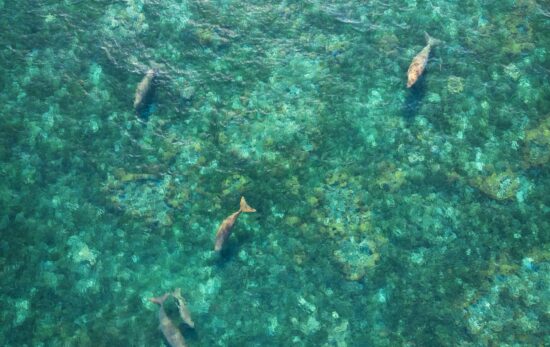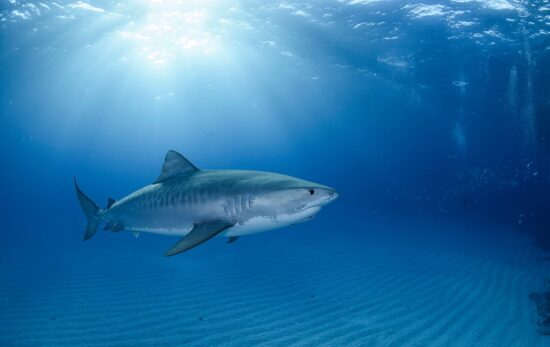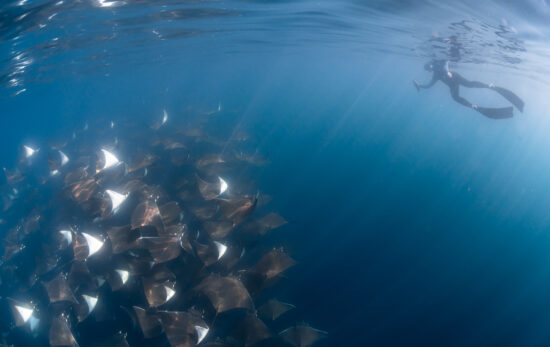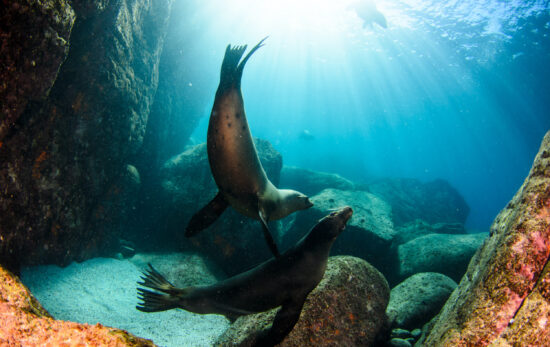The majority of land in the Mexican state of Baja California Sur is dominated by rugged desert and mountains as far as the eye can see. At times, it feels like a hostile and lifeless environment. But leave the shore and journey out to the best dive sites in Baja California Sur, and you’ll unveil a strikingly different reality. These waters are teeming with life and rank among the world’s best – especially for any diver searching for pelagic marine animals.
From whale sharks and sea lions to bull sharks and humpback whales, the waters surrounding Baja California Sur are crammed full of mega marine life. Any dive trip may include a chance encounter a migrating whale, a dolphin superpod or a train of jumping mobula rays. It is no surprise that the renowned oceanographer Jacques Cousteau famously dubbed the Sea of Cortez the ‘World’s Aquarium.’
Continue scrolling to discover the best dive sites Baja California Sur has to offer.
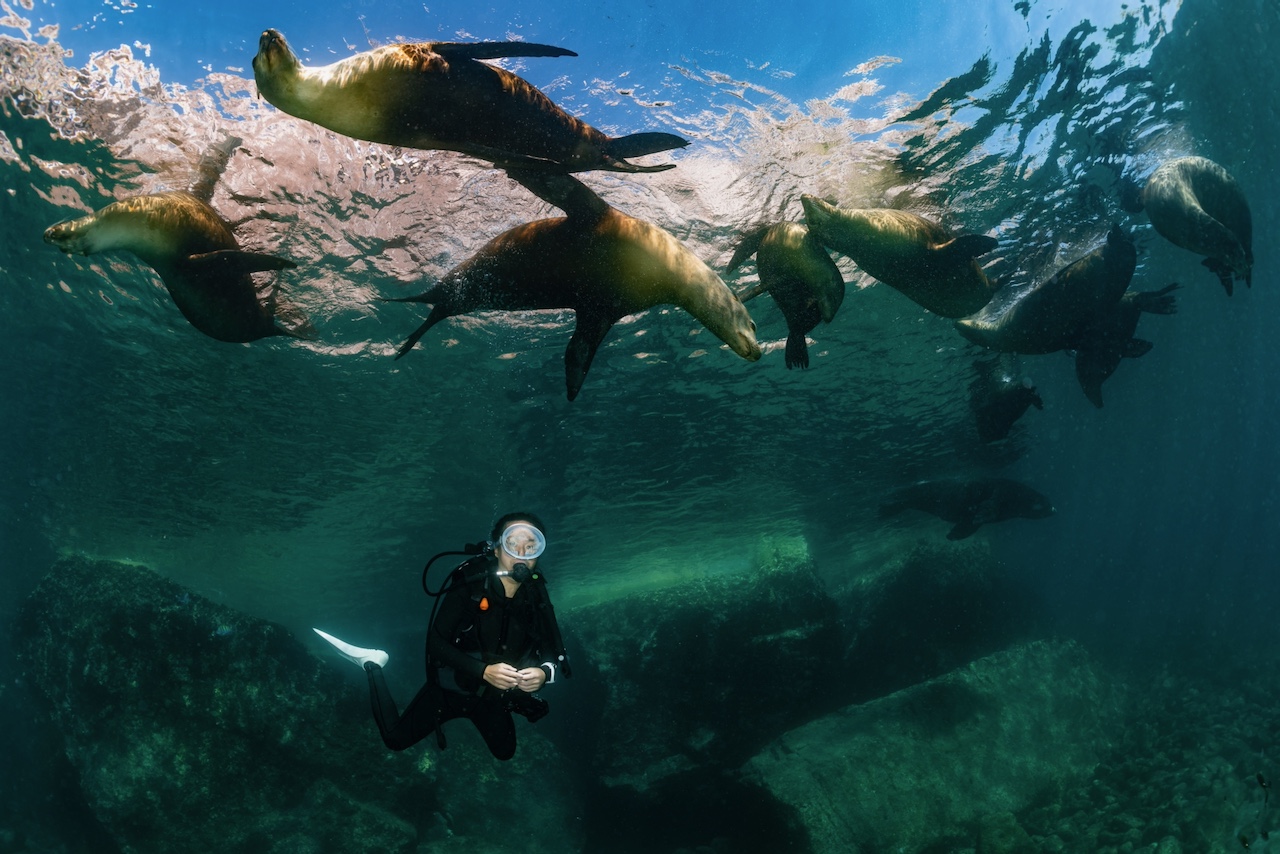
1. Los Islotes, La Paz
With more than 400 individuals, Los Islotes is one of the most famous California sea lion colonies in the world. It is also one of the best places to swim with sea lions. For divers, Los Islotes has two entry points. The northern side of the island is a deeper entry, while the southern side boasts slightly shallower depths. The site also features a beginner-friendly cave, which both snorkelers and divers can swim through when the water is calm. It’s also worth remembering that the sea lion breeding season lasts from June 1 until September 1. During this time, visitors to Los Islotes are not allowed to enter the water. However, it is still possible to observe the animals (including the super cute newborn sea lion pups) from a boat.
2. Fang Ming, La Paz
Once a Chinese fishing vessel transporting undocumented individuals to California, the Fang Ming is now one of the best wreck dives in Baja California Sur. In 1999, the Mexican Navy donated the ship to be sunk as an artificial reef. Today, it rests at approximately 21 meters (68 feet) on the east coast of Espíritu Santo Island. In fact, the Fang Ming was the first artificial reef in Latin America. Now, she is home to copious amounts of marine life. In addition to octopus, angelfish, parrotfish, grouper and snapper, green sea turtles can often be found taking a rest on the vessel’s deck.

3. El Vencedor, Cabo Pulmo National Marine Park
Cabo Pulmo National Marine Park sits on the eastern coast of the Baja peninsula. This is a popular destination with bucket-listers. Many say it’s a place that everyone should visit at least once in their lifetime. Schooling jacks are one of the top attractions in the park, with lucky divers observing the whirlwind-like structure of iridescent silver fish that’s truly a memorable sight. Not only can the sheer number of jacks be immense, the circling bull sharks, which can also be numerous, make the El Vencedor wreck a dive site you won’t forget anytime soon.
4. El Bajo, Cabo Pulmo National Marine Park
Alongside El Vencedor, El Bajo is another of Cabo Pulmo’s must-visit dive sites. The site, which ranges between 10 and 18 meters (30 and 60 feet) in depth, features one of the most impressive reefs found within the marine park. As a drift dive, divers can kick back, relax and take in all there is on offer while they float by. This life-filled reef boasts numerous coral species and is home to a wide range of fish species. Eels, rays, scorpion fish, snapper, grunts, pufferfish and angelfish are all regular post-dive logbook entries.
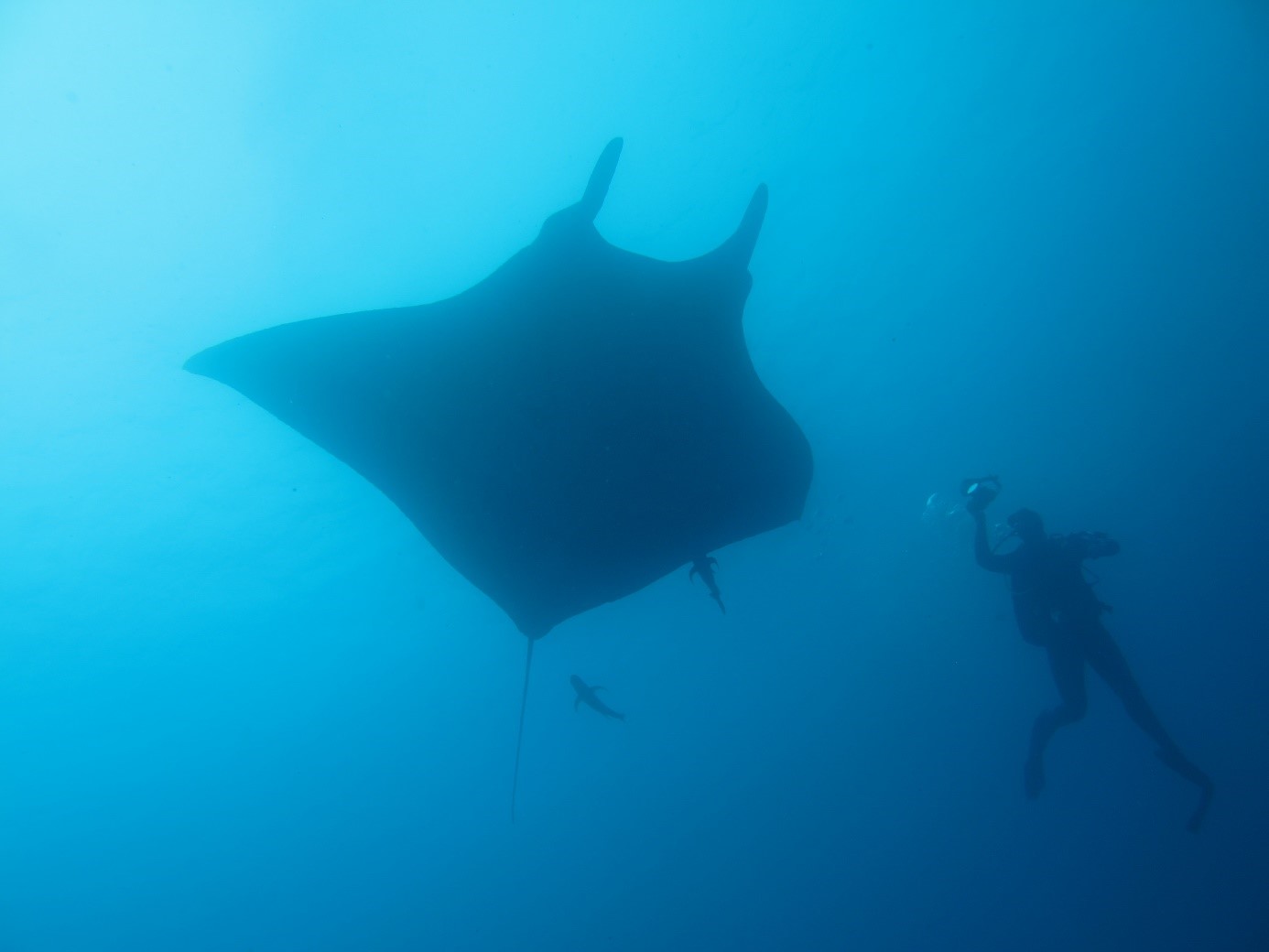
5. La Reina, La Paz/La Ventana
Between June and October, La Reina becomes a hot spot for the giant Pacific manta rays. If you’re lucky and visiting during the right season, you may get to encounter one or more of these gentle giants. But be aware, like all encounters with wild animals, this isn’t guaranteed. The La Reina dive site sits off the northern tip of Cerralvo Island (aka Jacques Cousteau Island) and boasts a densely populated reef. This makes it a worthwhile dive site even outside of manta season. Brain corals and gorgonians encase the reef, creating hideouts for bright green moray eels.
6. Gordo Banks, San Jose del Cabo
Gordo Banks is a popular dive with deep dive-loving divers. Around 7 miles (11km) offshore from San Jose del Cabo, two seamounts emerge from the deep with the highest point sitting 31 meters (102 feet) below the surface. Each structure is covered with striking black coral, but this isn’t what keeps divers coming to the site. The reason this is one of the best dive sites in Baja California is the pelagic marine life.
The peak of the Gordo Banks seamount lures a cocktail of snappers, jacks and creole fish. Quick on their tail can be any number of predators, such as marlin, silky sharks, tuna and schooling hammerhead sharks. With a backdrop of the deep blue, this is one of the best dive sites for divers looking to inject a little bit of adrenaline into their diving!
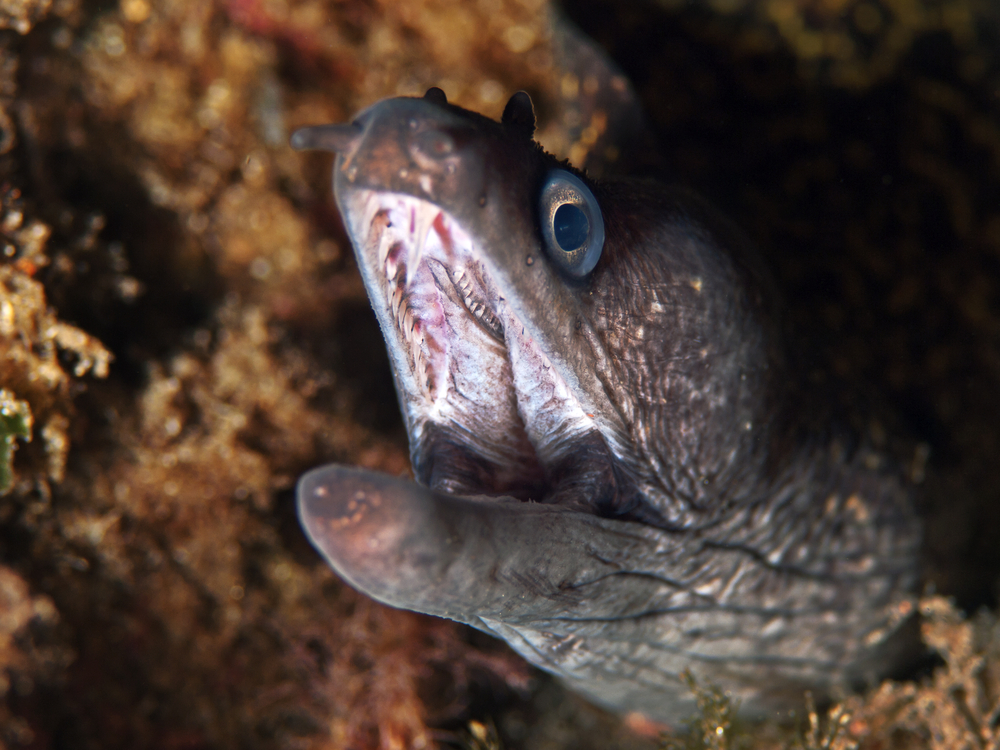
8. Land’s End, Cabo San Lucas
One of the exciting aspects of the Land’s End dive site is that you can begin your dive in the Sea of Cortez and finish it in the Pacific Ocean, or vice versa. This makes it one of the most unique dive sites in the world. You may be able to enjoy whale song melodies here, also, as it sits right next to the Cabo San Lucas Arch – a hot spot for humpback whales in the winter months.
Land’s End will take you through an underwater cavern and past smaller wreck remnants while you spot members of the resident sea lion colony. The site also houses a cornucopia of marine life, including octopuses and large schools of sardines!
7. Pelican Rock, Cabo San Lucas
Pelican Rock sits a relaxed, five-minute boat ride from the marine in Cabo San Lucas. Both pelagic life and macro life are plentiful at Pelican Rock, meaning there’s something for every kind of diver to enjoy. The site’s underwater pinnacle is home to a circus of macro life, with nudibranchs, seahorses and frogfish regularly seen. Divers can also spot large schools of sardines, often followed closely by the water birds that hunt them in and around the peak of the pinnacle. And, just in front of the pinnacle, there is also a wall dive, which is where divers can observe the peninsula’s famous sand waterfalls.

9. Piedra Blanca, Coronado Island, Loreto
Take a tranquil, four-hour desert drive north from La Paz through towering mountains, and you’ll reach Loreto. This sleepy town is famed as a resting place of blue whales during February and March. Dive sites here are abundant with marine life thanks to the protected Loreto Bay National Marine Park. The pinnacle of Piedra Blanca is usually explored as a drift dive (check out how to master drift diving here). Firstly, this site houses a reef wall brimming with tropical marine life, like triggerfish, sergeant majors and angelfish. What’s more, in the deeper depths, you’ll find striking purple gorgonians and black corals, too!
10. Faro Norte, Danzante Island, Loreto
The Faro Norte dive site offers both a geographical and faunal dose of entertainment thanks to its combination of coral coverage and series of stair-stepped walls. Working down towards 30 meters (100 feet), this progression is filled with crevices and canyons that provide ample opportunities for divers to discover the marine life species that call the reef home. Among the hard and soft corals, divers commonly encounter turtles, octopuses, moray eels and a diverse array of fish species.
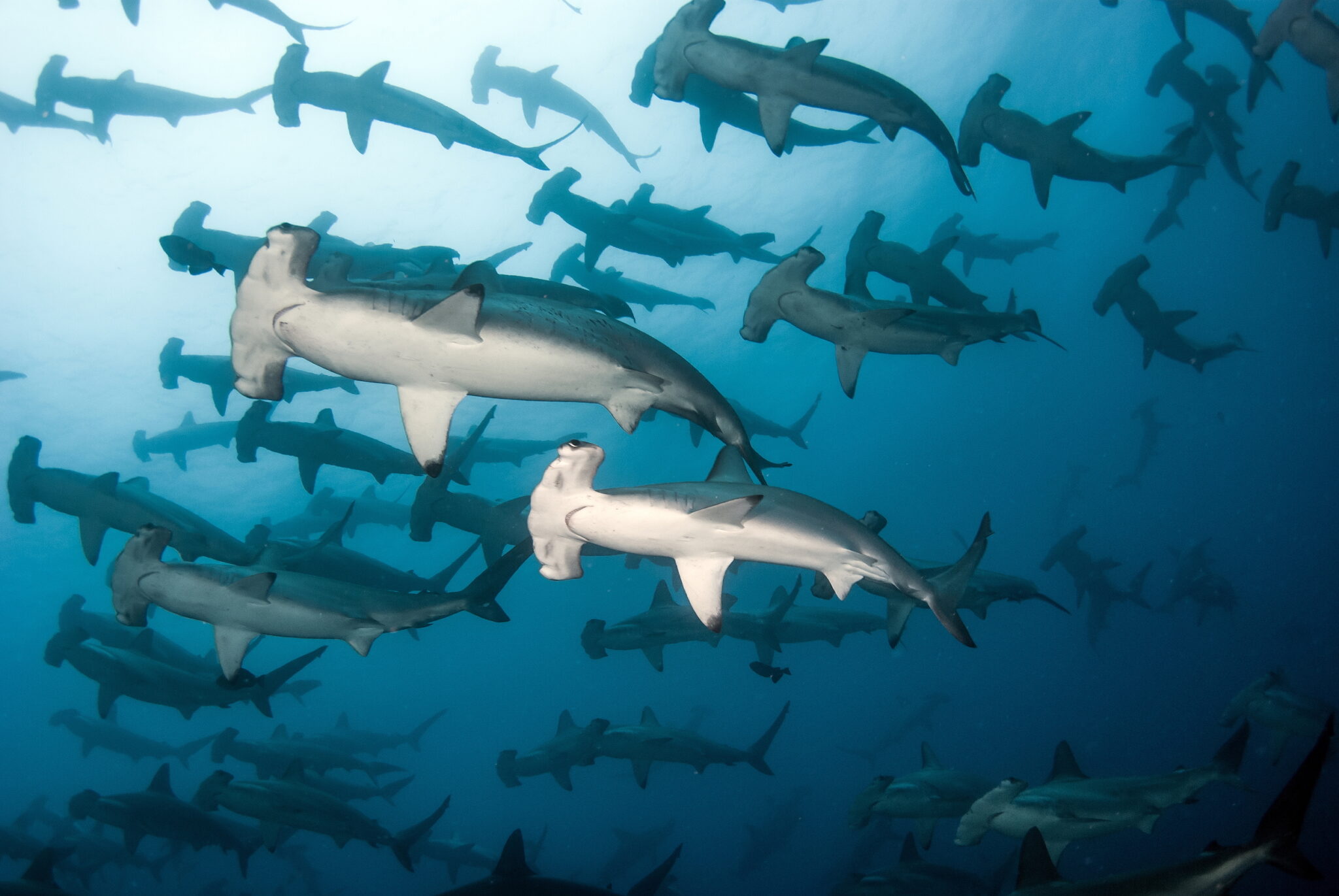
11. Cabo Pearce, Socorro Island, Revillagigedo Archipelago
Between April and June, Socorro is a reliable site for seeing schools of hammerhead sharks. And between June and November, it’s also great for spotting whale sharks. This makes Socorro one of the top diving areas and liveaboard destinations on the Baja Peninsula. At the Cabo Pearce site, the linear rock formation extends from Socorro’s eastern coast into a moderate current. This means it’s best suited to experienced divers only. Typically, you’ll descend below the strongest flow of current and await the underwater display.
12. El Boiler, San Benedicto, Revillagigedo Archipelago
El Boiler is a renowned hive for giant manta rays in the Revillagigedo Archipelago. The rays gather here to take advantage of the cleaning station offered by the resident angelfish. Additionally, dolphins and sharks are regular logbook entries, making the site ideal for divers wanting pelagic encounters. The topography here involves a small, central pinnacle that begins 6 meters (20 feet) from the surface.
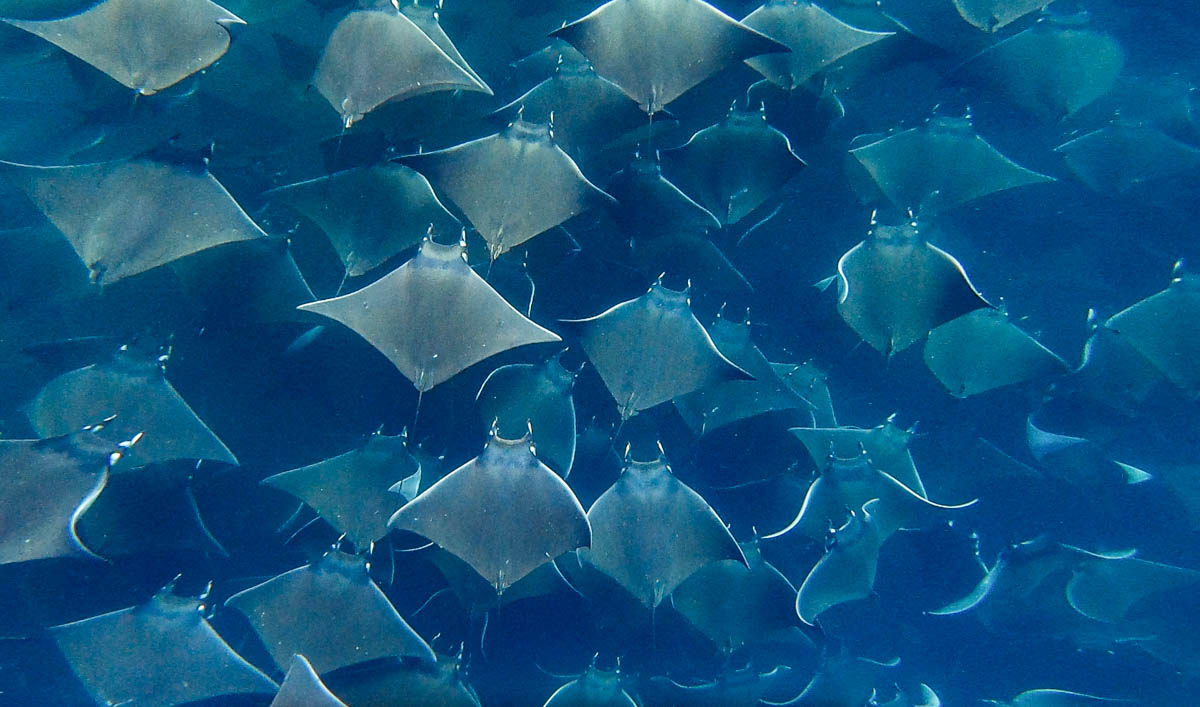
Eager to Dive in Baja California Sur?
If the chance to see a school of hammerheads, swim alongside a giant manta ray and play with a curious sea lion is just too tempting, it’s time to book your next dive vacation to Baja California Sur or find a dive shop in the area. Click below to explore the range of dive resorts and liveaboards in the area. Alternatively, get in touch with the team at PADI Travel for advice on the best destination for your dream vacation!

